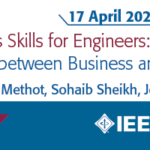Ujjwal Maulik, Professor, Department of Computer Sc. and Engineering, Jadavpur University, Kolkata, India, FIEEE.
Use of computational algorithms in the healthcare domain aims for advancement in therapeutic as well as early diagnosis of pathogenic conditions. Bioinformatics deals with the development and applications of algorithms and statistical methods to biological datasets like deoxyribonucleic acid (DNA), ribonucleic acid (RNA) or protein sequences. Earlier, research in bioinformatics focused primarily in the analysis of microarray data, sequence analysis, structure predictions, in silico 3molecule design etc. Advancement in machine learning and other computational methods along with the availability of high throughput data has now made it possible to address many issues in precision medicine. Similarly, biomedical image analysis is also one of the important areas where significant research has been executed successfully. In recent times, automating the diagnosis of malignancies from histopathology images is one of the well-known applications along with disease prognosis using advanced sequencing e.g., NiCE-Seq [1], ATAC-Seq [2], RNA-Seq [3], etc. These sequencing methods help to include genomic, epigenomic and proteomic data. Significant applications of single cell techniques and advanced machine learning algorithms increase the possibility of dedicated patient-specific therapeutic as well as diagnostic protocols. The term “Precision Medicine” [4] [5] [6] has been coined as a gene-specific therapeutic protocol for patients that has two main objectives:
a. Personalized therapeutic patients for diseases like oncology, and
b. Gaining prior knowledge for multiple other pathogenic conditions.
Instead of using the same therapies for all the patients having similar disease, a specific therapy usage based on biological conditions is the key to precision medicine. In this regard, molecular diagnostics and imaging along with advanced analytics are extremely important. Precision medicine can improve the diagnosis and treatment and thus help in better management of personalized healthcare.
In 2001, genome sequencing was performed for the first time. In the last two decades, plenty of research advancement has successfully improved the sequencing methods. Almost $3 million was spent for generating the first human genome sequence in the Human Genome Project (HGP) [7] where the total cost involved was $2.7 billion in 2003. In recent times, $1000 is enough to perform a whole genome for a person in a few hours. This type of advancement increases the possibility of precision medicine. Personalized therapeutic needs to include three pieces of information from the recent developments namely: 1. Large scales of data (viz., human genome sequences), 2. The patient-specific method for specialized characterization (genomic, proteomic, and metabolomics data), and 3. Sophisticated computational pipelines to analyze the data. All this information is now within our reach due to the advancement of basic research, including molecular biology, genomics, proteomics, and bioinformatics. Oncology is one of the prior targets due to its course of lethality. Also, the therapeutic solutions, known for such pathogenic conditions might leave adverse effects.
Genomic markers are one of the key factors in this regard. This proposes the importance of immunotherapy in malignancies based on the list of biomarkers that are usually utilized for early diagnosis or prognosis. Also, the identification of comorbidity conditions can be another key regulator. More elaborately, each patient might have a distinct list of parallel pathogenic conditions. These diseases can attenuate the effect of therapeutic protocols. For example, type 2 diabetes and hypertension are identified as fatal comorbidities for SARS-COV-2 infections in the current pandemic time. Likewise, the patient with severe type 2 diabetes has a high risk of Alzheimer’s disease. These observations suggest the importance of tissue specificity, cell specificity for each sample. Besides, precision psychiatry is another important area of research. Very few works have been done so far to unveil the mystery of precision psychiatry. Also, implementations of immunotherapy are equally important for neuropsychiatric and neurodegenerative diseases. However, many of these scientific endeavors are still under research. In terms of computational tools, advanced machine learning such as, convolutional neural networks (CNN) [8], graph neural networks (GNN) [9], continuous learning [10] etc., along with explainable Artificial Intelligence techniques [11] are extremely useful.
Convolutional Neural Networks: In recent time, CNN has been used very successfully for unsupervised feature extraction from structured data. They are particularly useful in computer vision tasks such as scene classification, object detection and segmentation. CNNs have extensive application in the domain of medical imaging. They can be used to automatically segment the tumors from radiographic images, or segment veins from retinal images. CNNs have been combined with Recurrent Neural Networks (RNNs), Long Short-Term Memory (LSTM) models for tasks such as action recognition in videos, or image captioning.
Graph Neural Network (GNN): GNNs have recently gained popularity with the advent of Graph Convolution Networks (GCNs). GNNs and GCNs can be used for link prediction as well as node and link property prediction in graphs. While GNNs still have numerous unaddressed challenges, they are extensively used for unstructured datasets. Many biological datasets, available in the form of graphs containing interaction between genes, drugs, diseases etc., can be analyzed using GNNs.
Continual Learning: Continual Learning (CL) allows a model to adaptively learn about the external world while incrementally developing itself. CL is sparsely present in current deep learning literature and is restricted to narrow, closed-task domains. While CL is not ready for prime-time, significant strides have been made that address some of the key issues of adaptability of a model [12] [13].
Explainable Artificial Intelligence Techniques: Explainable artificial intelligence (XAI) enables human-comprehensibility of machine learning algorithms. A key issue of modern machine learning algorithms and deep learning in particular, is their lack of explainability. Even when they provide the right result, the reason behind that result is inconceivable to humans. As Artificial Intelligence applications expand in their capabilities, the need for humans to trust in their reasoning becomes paramount. This is where XAI comes into picture. XAI can allow us to see why a method may infer a certain disease from a set of symptoms or why a histopathological image is marked as malignant by a method. Thus, XAI will be very useful to design an effective expert system in healthcare.
Currently doctors rely on precision medicine to treat a wide range of cancer patients, especially those who are in an advanced stage. These include lung, breast, skin, colon and pancreatic cancer. Some other successful application domains are HIV, childhood illnesses, and cystic fibrosis. Precision medicine is expected to be used for other diseases like Alzheimer, multiple sclerosis, rheumatoid arthritis, type-2 diabetics etc., in the future. Very recently, we have tried to explore the comorbidities, possible therapeutic protocols based on multi-omic data applying network analysis and machine learning techniques. In the pandemic era, medical professionals have identified comorbidities and post-COVID19 effects as one of the prime reasons behind severity. In [14] it has shown how the structural multiplicity of the viral proteins can trigger the host cell protein partners and the association with post COVID19 severity. Likewise, we have explained the cell-specific molecular mechanism for the vital organs during the SARS-CoV-2 intrusion. The pipeline utilizes multiple organ-specific single cell RNAseq data that helps to identify the cells having a higher infection affinity. Subsequently, the cell-specific molecular mechanisms have been shown based on influential markers of the corresponding cell.
References:

Dr. Ujjwal Maulik is a Professor in the Department of Computer Science and Engineering, Jadavpur University since 2004. He was also the former Head of the same Department. He held the position of the Principal in charge and the Head of the Department of Computer Science and Engineering. Dr. Maulik worked in many universities and research laboratories around the world as Visiting Professor/ Scientist including Los Alamos National Lab., USA, Univ. of New South Wales, Australia, Univ. of Texas at Arlington, USA, Univ. of Maryland at Baltimore County, USA, Fraunhofer Institute for Autonome Intelligent Systems, St. Augustin, Germany, Tsinghua Univ., China, Sapienza Univ., Rome, Italy, Univ. of Heidelberg, Germany, German Cancer Research Center (DKFZ), Germany, Grenoble INP, France, University of Warsaw, University of Padova, Italy, Corvinus University, Budapest, Hungary, University of Ljubljana, Slovenia, International Center for Theoretical Physics (ICTP), Trieste, Italy. He is the recipient of BOYSCAST Fellowship, Government of India in 2001, Alexander von Humboldt Fellowship during 2010, 2011 and 2012 and Senior Associate of ICTP, Italy during 2012-2018. He is a Fellow of the Institute of Electrical and Electronics Engineers (IEEE), USA, Indian National Academy of Engineers (INAE), India, International Association for Pattern Recognition (IAPR), USA, West Bengal Academy of Science and Technology (WAST), India, Institution of Engineers (IE), India, Institution for Electronics and Telecommunication Engineers (IETE), India, 2001. He is also an ACM Distinguished Speaker. His research interests include Machine Learning, Pattern Analysis, Data Science, Bioinformatics, Multi-objective Optimization, Social Networking, IoT and Autonomous Car. In these areas he has published ten books, more than three hundred fifty papers, filed several patents and already guided twenty doctoral students. He has also mentored start-ups in the area of AI and Healthcare. His other interests include outdoor sports, music and traveling extensively around the world.


